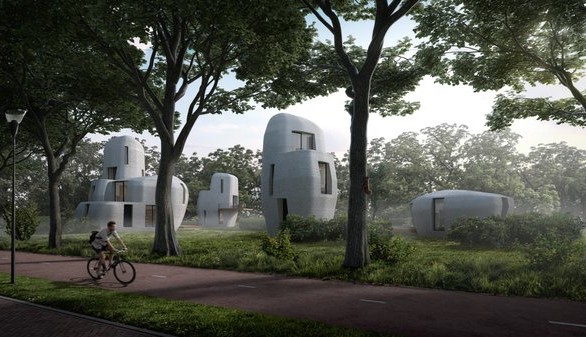House from 3D-printer
on

In 2019, in the suburb of Meerhoven in the city of Eindhoven, the world's first 3D-printed concrete house will appear, and which will actually be occupied. It is the first of a total of five 'printed' houses; with each subsequent house new innovations will be tested.
The municipality of Eindhoven, TU Eindhoven and the companies Van Wijnen, Vesteda, Saint-Gobain Weber Beamix and Witteveen+Bos are the partners for this project.
World first
Printing concrete in 3D is an innovation that has the potential to change the (housing) construction industry significantly, with respect to speed, affordability, durability and freedom of form and layout. The TU Eindhoven is with its concrete printer one of the world leaders in this area. The five houses in Eindhoven will actually be occupied, and that is a world first. This means that these houses have to comply with the relevant building codes and the requirements of the occupants with respect to layout, comfort, affordability and quality. Around the middle of 2019 the first affordable 3D-printed rental house will be habitable.
Real time innovation
The detached houses in this Project Milestone are realised sequentially. This means that each subsequent house can benefit from the lessons learnt and be immediately adapted to the wishes of the occupants. The first house will be single storey and will be printed off-site. It is the ambition to print the fifth house, comprising three storeys, entirely on site, so that all the printed elements are directly at their final destination. The group definitely do not see this project as an experiment. They view the development is a pioneering innovation that will cause upheaval in the (housing) construction industry.
Freedom of form
The unusual design from Houben / Van Mierlo architects is inspired by erratic boulders in a green landscape. The space around the houses is effectively the garden for the occupants of Bosrijk. Using a 3D-printer, shapes can be relatively easily realised that with traditional concrete construction methods would be very labour intensive. As a consequence there are more options to provide customised designs for the occupants. This is also true for the outside of the house. The functionality and quality of the inside will be closely monitored. That 'antique cupboard' will soon be easily placed against a straight wall.


Discussion (4 comments)